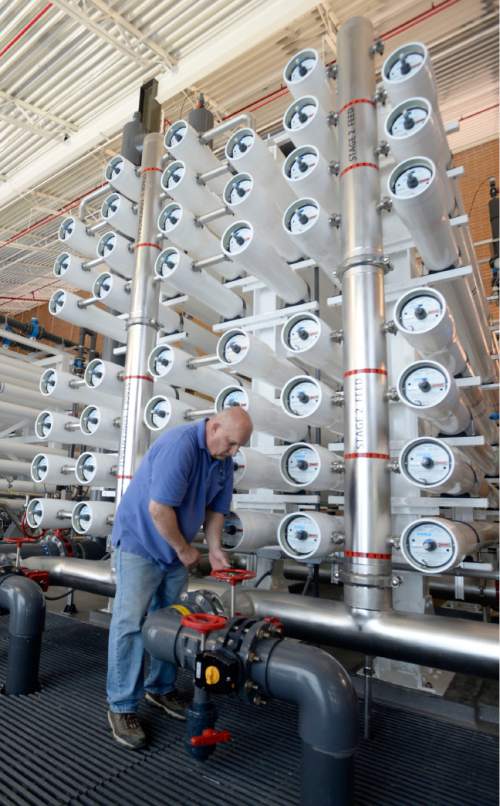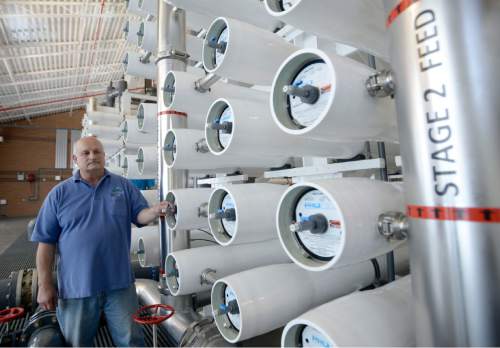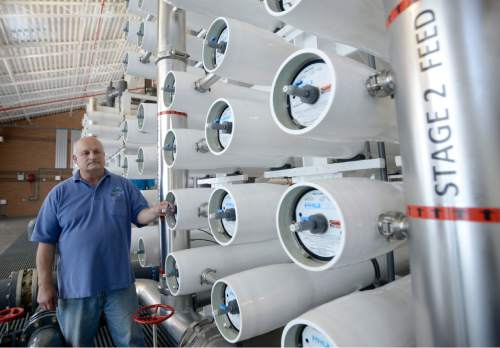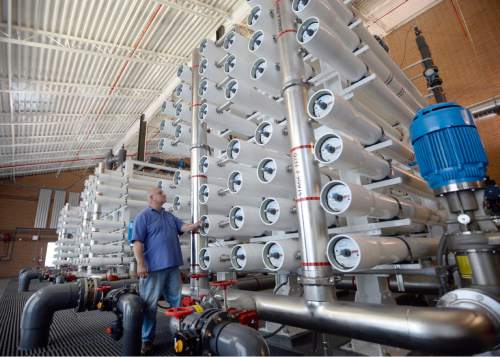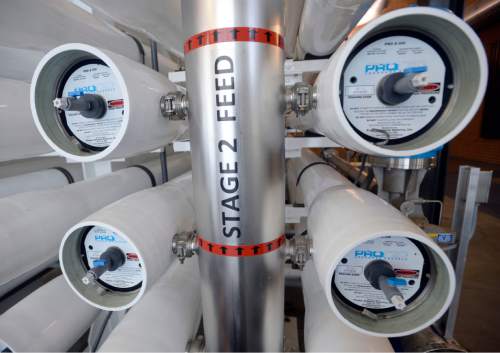This is an archived article that was published on sltrib.com in 2016, and information in the article may be outdated. It is provided only for personal research purposes and may not be reprinted.
Managers from four of Utah's largest water districts are asking lawmakers to fund a fifth of the estimated $18 billion in repairs they believe will be necessary by the year 2060.
And even with the state's help, they told a legislative committee, Utahns' water rates could quadruple over the next 40 to 50 years as water providers grapple with the maintenance backlog.
"Growth is an important and interesting dynamic, but it's going to take more money simply to maintain what we have in place today than it will to build new infrastructure to support folks who are not yet with us," said Gene Shawcroft, general manager of the Central Utah Water Conservancy District.
The cost is so high, said CEO Richard Bay, that his Jordan Valley Water Conservancy District expects to see water rates rise at twice the rate of inflation, if not faster, for the next several decades. The Jordan district, which sells water to municipalities and other customers in Salt Lake and Utah counties at the wholesale rate of $480 per acre-foot, expects its prices to increase to more than $2,000 per acre-foot.
Wednesday's presentation, which took place at the request of the Legislature's Natural Resources, Agriculture and Environment Interim Committee, was part of a broader conversation the committee has planned as state lawmakers begin to consider how to use the funds set aside during the 2016 legislative session by the controversial SB80.
Critics have voiced concern that funding made available under that bill would go toward constructing large new water projects such as the Lake Powell Pipeline. But water managers from the Jordan Valley, Central Utah, Washington County and Weber Basin conservancy districts said at least some of that funding needs to go toward repairing and replacing infrastructure.
The districts said Wednesday they had or were in the process of developing a long-term saving plan to fully cover the repairs. But if the state could help cover, in the expected form of a revolving loan fund, up to 20 percent of the total cost it would be enough to make up the difference between what the districts have in savings and what they could be required to pay if aged infrastructure fails unexpectedly.
Shawcroft said they hadn't calculated what it would cost Utahns to repair existing infrastructure if the state does not provide funds.
Zach Frankel, executive director of the Utah Rivers Council, said the water districts would be able to cover the costs of maintaining their systems, and that the presented estimates were inflated.
Frankel said the Rivers Council analyzed the Utah Division of Water Resources' "$20 billion list" of water-related projects that require future funding. Of the 100 most expensive projects on the list, he said, 50 had secured funding, and the report did not take into account the $10 billion in combined revenue the water districts have and could be used to pay for the others.
"There is not a demonstrable need for tax funding for water development," Frankel said. "This is special interests hiring lobbyists to misinform the public into believing billions of dollars need to be spent."
But Eric Millis, director of the Utah Division of Water Resources, said the list to which Frankel referred was an outdated, discredited report the division has disavowed since 2013. The new estimate comes from a statewide water infrastructure plan that was published in 2015.
Frankel said the state used some of the old data for the new report and that the resulting numbers should be reviewed rigorously.
"There are definitely viable and credible infrastructure needs, but we can't sort out what's real from what's not," he said. "So far what we've seen are glossy marketing reports of expenses with little consideration of revenues, bonding abilities and statewide funding sources."
Communities nationwide are struggling with deteriorating water infrastructure, and Utah is no exception, Bay told the committee. He handed out a 60-year-old piece of cast-iron pipe to show its corrosion. Pipe corrosion can diminish drinking-water quality, and such a situation in Flint, Mich., has led to a controversy involving local and national officials.
The Jordan Valley district has 100 miles of 6-inch cast-iron pipe that was installed at the same time as the pipe Bay showed, he said, and the agency is able to replace about 3 miles per year.
Additionally, Shawcroft said, local managers are likely on the hook to cover the costs of retrofitting or replacing a large number of federal water projects in Utah. Wayne Pullan, an area manager for the Bureau of Reclamation in Provo, explained that while those projects, which include sites such as Willard Bay and Jordanelle Reservoir, are the property of the bureau, local managers are responsible for the operation and maintenance of those projects. Federal funding to replace or retrofit those projects could become available, he said, but there is no guarantee.
"Many believed that when the time came to replace the facilities, that somehow Congress would exercise authority to bring large amounts of funding to the table," Pullan said, but "Congress doesn't get excited about replacement costs."
Shawcroft testified that 60 percent of the water delivered in Salt Lake County comes from projects originally constructed with federal funds. Comparing that water infrastructure to a car purchased by the federal government, he said it's come "to the point where that car needs to be pushed off a cliff and we need to buy a new one."
Despite stating that he supported the water managers' request, Sen. Scott Jenkins, R-Plain City, warned the districts that state funding might not come, either.
"The way I look at this, you are responsible for your own indebtedness and your own future projects," he said. "There is a great deal of debate right now about what level these funds are going to grow to. But either way … if the state is not there for you, you are still responsible. This is a word of warning to you, to get your house in order and take care of this, because we don't know where the state will be."
Twitter: @EmaPen


